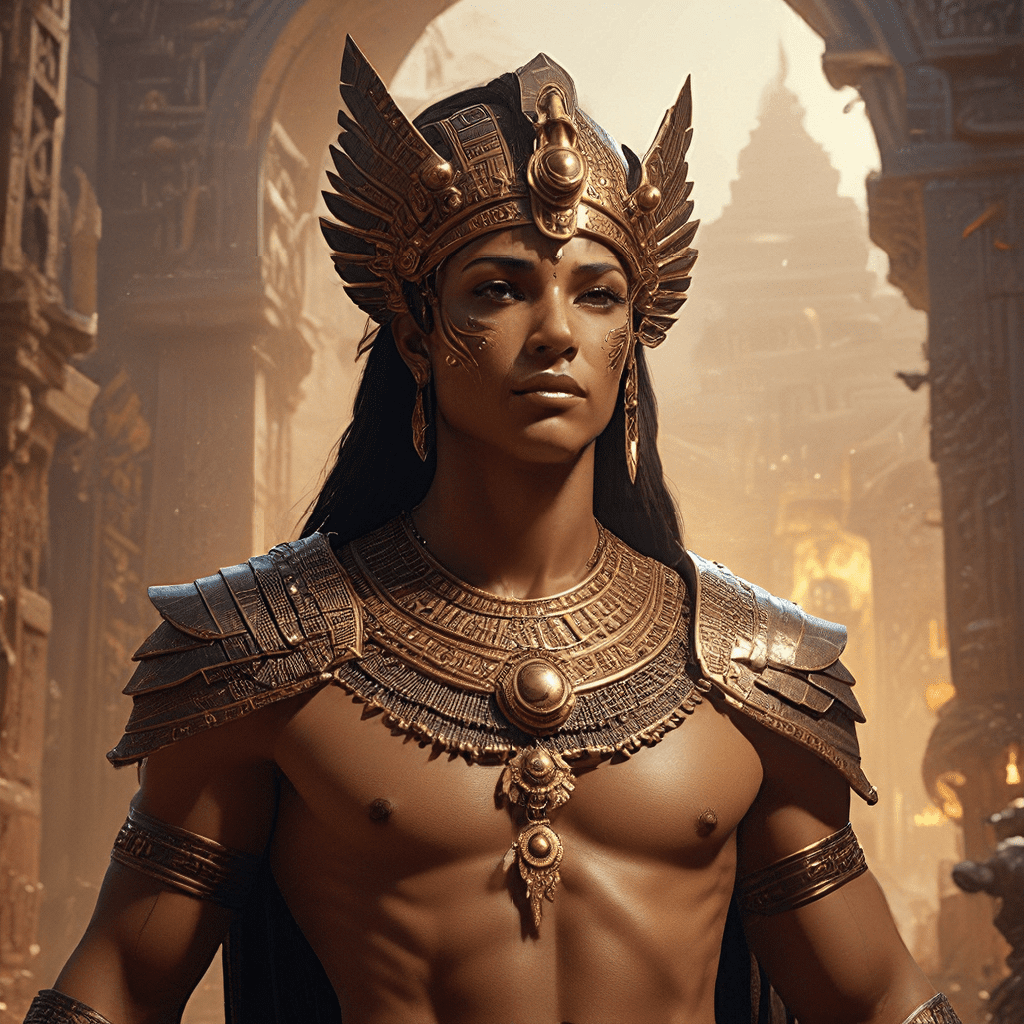## The Guardians of the Underworld: Exploring the Mythological Creatures of the Duat
1. Introduction: The Duat, A Realm of Shadows and Trials
The Duat, a realm shrouded in mystery and wonder, is the ancient Egyptian underworld. This mysterious realm held a profound significance in Egyptian mythology and beliefs about the afterlife. Upon death, the soul was believed to embark on a perilous journey through the Duat, facing numerous challenges and guardians. These guardians, each with a distinct purpose, ensured the order of the afterlife and determined the fate of the deceased.
2. The Gatekeeper: The Watchful Eye of Anubis
Anubis, the jackal-headed god, stood as the vigilant guardian of the Duat. He was the embodiment of death and the guide who ushered souls into the afterlife. Anubis held a crucial role in the weighing of the heart ceremony, where he balanced the heart of the deceased against the feather of Ma’at, the goddess of truth and justice. If the heart proved lighter than the feather, the deceased was granted eternal life in the Field of Reeds, a paradise where they could live in eternal bliss. However, if the heart proved heavier, it was devoured by Ammit, the devourer of souls, signifying eternal damnation.
Anubis was also closely associated with mummification and funeral rituals. His presence and guidance were believed to be essential in ensuring a smooth transition of the soul into the afterlife. The Egyptians would often depict Anubis in tombs and funerary art, a constant reminder of his watchful presence and the importance of a righteous life.
3. The Serpent of Eternity: Apep’s Threat to Order
Apep, the terrifying serpent of chaos, was an embodiment of darkness and disorder in Egyptian mythology. His relentless struggle against Ra, the sun god, symbolized the constant battle between order and chaos. Apep, a formidable serpent with a gaping maw and glowing eyes, resided in the underworld, seeking to devour Ra and plunge the world into eternal darkness.
The Egyptians believed that Apep emerged from the depths of the Duat each night, attempting to consume the sun, representing the setting of the sun. However, Ra would always prevail, defeating Apep and ensuring the return of the sun at dawn. This cyclical battle underscored the importance of maintaining order and repelling darkness in both the physical and spiritual realms.
Apep’s existence served as a constant reminder of the fragility of order and the need for vigilance against forces that threatened to disrupt the balance of existence. His presence in the Duat added to the challenges faced by souls on their journey into the afterlife.
4. The Devourer of Souls: Ammit’s Judgement
Ammit, the terrifying creature with the head of a lion, the body of a hippopotamus, and the hindquarters of a crocodile, was a manifestation of divine justice in the Duat. She stood as the ultimate judge, devouring the hearts of those condemned by Anubis’ weighing ceremony.
Ammit’s role was to ensure that those who led unrighteous lives faced the consequences of their actions in the afterlife. Her mere presence was a powerful reminder of the importance of moral conduct and the need for accountability. The Egyptians believed that even the gods were bound by the laws of Ma’at, and Ammit stood as a symbol of the unwavering justice that permeated the universe.
The threat of Ammit’s judgment served as a powerful deterrent to wrongdoing, encouraging individuals to strive for a virtuous life and seek divine favor in the afterlife. Ammit’s presence in the Duat underlined the crucial importance of moral balance and social order, both during life and in the afterlife.
5. The Protector of the Sun: The Sacred Scarab
The scarab beetle held a sacred position in ancient Egyptian culture, symbolizing rebirth, transformation, and the sun god Ra. Its association with the sun god stemmed from its unique life cycle. The scarab beetle would roll dung balls, resembling the sun, across the earth, mirroring the journey of the sun across the sky.
In the Duat, the scarab beetle played a crucial role in protecting the deceased’s soul, ensuring its safe passage through the realm of shadows. The Egyptians often placed scarab amulets in tombs, believing that they would shield the deceased from evil spirits and guide them on their journey to the afterlife. The scarab’s presence in the Duat underlined the belief in the cyclical nature of life and the importance of rebirth and renewal, even in death.
6. The Eater of the Dead: The Hungry Beast
The “Eater of the Dead” was a terrifying monster that lurked in the Duat, guarding the underworld and consuming the souls of those who failed to navigate the trials and tribulations of the afterlife. Its identity was often shrouded in mystery, described as a monstrous beast with razor-sharp teeth and an insatiable appetite.
The Egyptians believed that the Eater of the Dead was a formidable force, capable of devouring souls without remorse. Its presence served as a constant reminder of the dangers lurking in the Duat and the need for the deceased to navigate the challenges and trials with caution and determination.
The Eater of the Dead’s existence reinforced the belief that the afterlife was not a guaranteed paradise but a perilous journey requiring courage, resilience, and a pure heart. It emphasized the consequences of failing to uphold the principles of Ma’at and the importance of striving for a life that would secure a peaceful transition into the afterlife.




